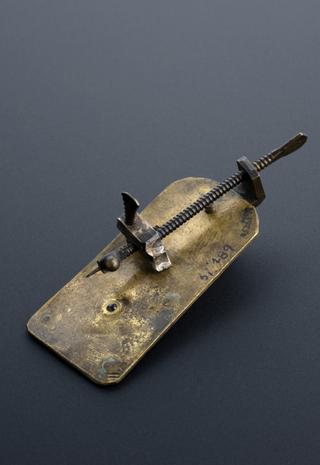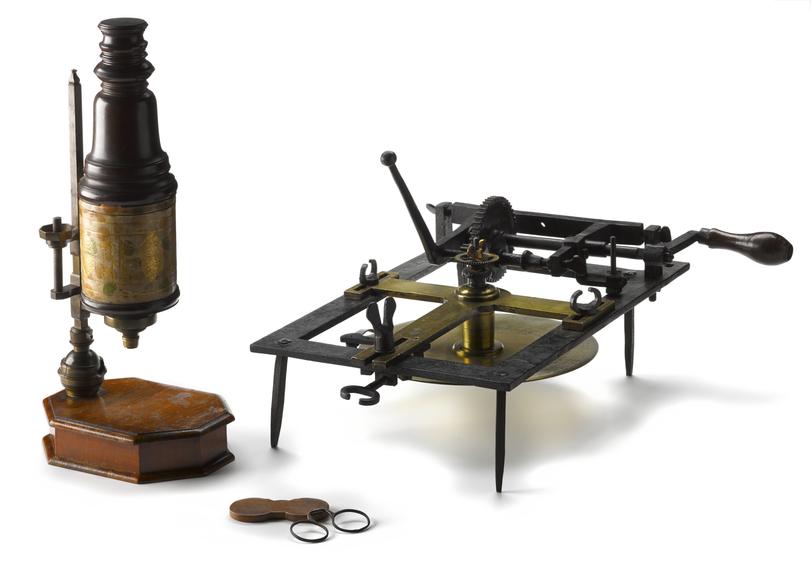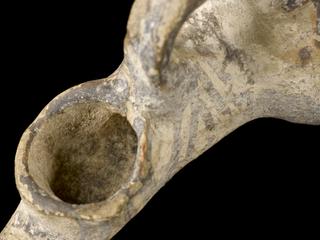
Compound microscope
- maker:
- John Marshall and John Cuff




Cuff type microscope on the Marshall pattern, signed by Marshall in the drawer, English, early 18th century
A compound microscope has two or more lenses. This microscope has an eyepiece, a field lens and objective lenses. The large ball and socket joint can be used to tilt the microscope and also allows the body to be swivelled round to overhang the foot or base of the microscope. The specimen can be lit by a candle underneath the platform.
John Marshall, who made this microscope, was an optical instrument maker based in London from 1685 to 1723. The microscope would have been difficult to set up without any instructions. Microscopes of this size would have cost around £5 10s (equivalent to £420 today) – three months’ wages for an unskilled labour at this time.
Details
- Category:
- Microscopy (Wellcome)
- Collection:
- Sir Henry Wellcome's Museum Collection
- Object Number:
- A56281
- Materials:
- brass (copper, zinc alloy), lignum vitae (wood), pasteboard, vellum, oak (wood), gilt, incomplete and not recorded
- Measurements:
-
overall: 440 mm x 210 mm x 155 mm, 3.06kg
- type:
- compund microscope
- credit:
- Wellcome Trust (Purchased from Stevens)




